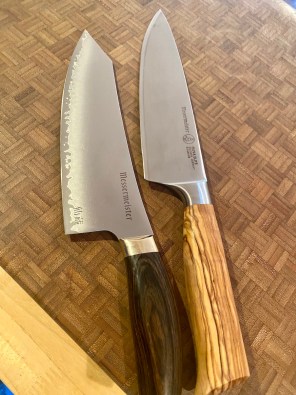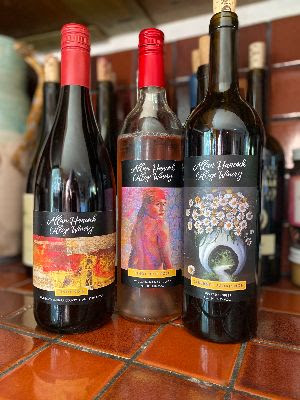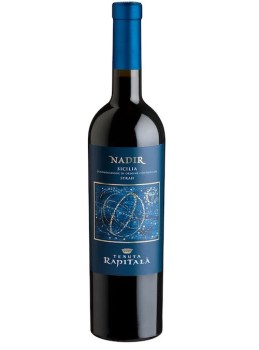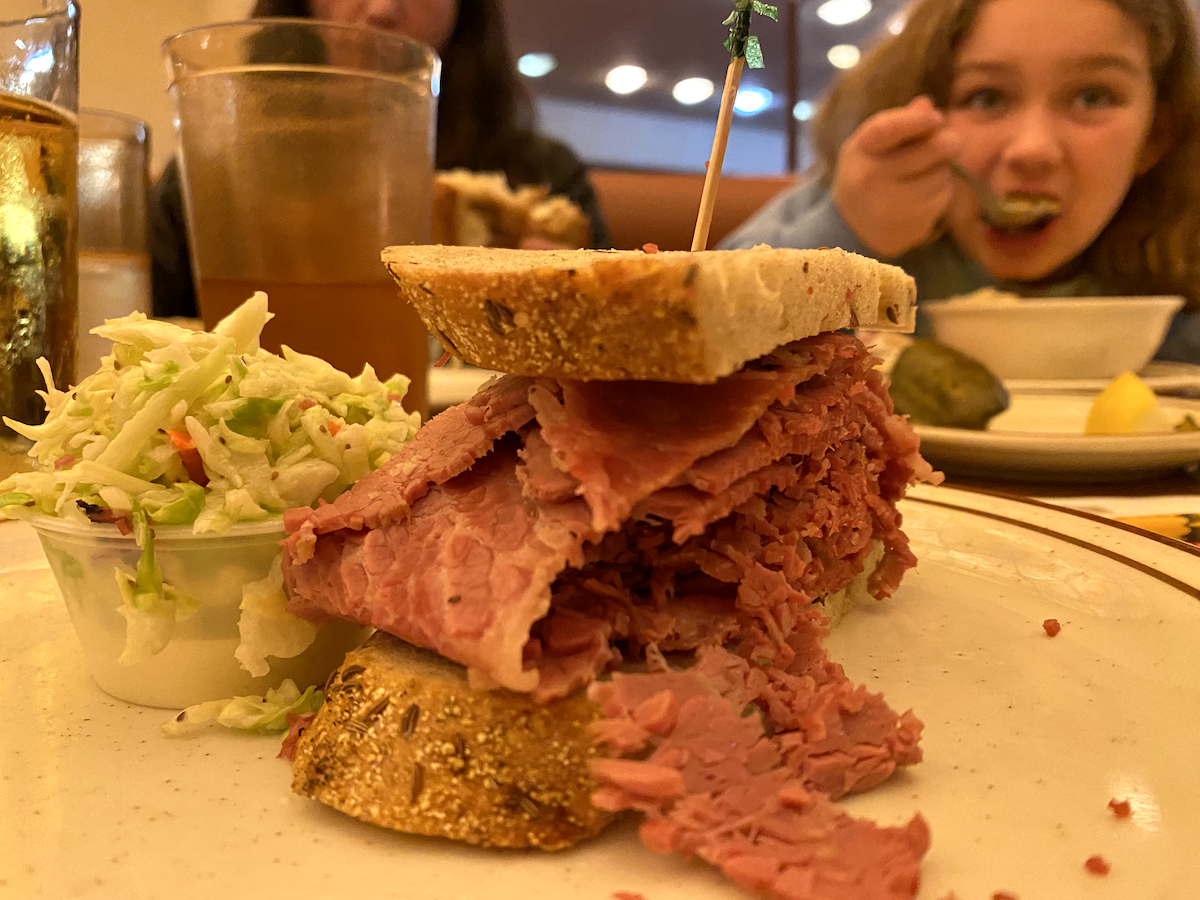Full Belly Files: The Return of Wine Festivals
Are Wine Lovers Ready to Go Back to Live Events?

On the first weekend of March 2020, as the coronavirus started spreading from Asia across Europe and knocking ever harder on American doors, the World of Pinot Noir (WOPN) took over the Ritz-Carlton Bacara in Goleta, as it had done annually for years. As usual, I was part of the festivities, running a panel or two, attending dinners, and mixing it up with my wine professional friends and colleagues from around California and the world.
We were aware of the virus, but it still felt like a joke, as we laughed while bumping elbows. We had no idea what was coming and no idea that we were dodging a serious bullet by attending indoor tastings where nearly 1,000 people were sipping and spitting wine, unwittingly spraying our potentially COVIDized germs all over the place.
Thankfully, nothing happened. No one got COVID-sick as far as I know — and I’ve written and spoken about this multiple times without anyone telling me otherwise — and the word “super-spreader” did not become associated with WOPN. (I’m also on the advisory board of the Santa Barbara Culinary Experience, and we had to completely cancel our entire inaugural event that following weekend as the virus progressed so rapidly.)
After a couple of months of collective panic across all industries, many food and wine events returned in a virtual form. As silly as it sounds to taste together in front of a laptop — and it often was — wineries were able to use the format to directly speak to their fans from near and far, and there was plenty of value to extract from those countless sessions. (I was involved in somewhere around 100 of them, usually as a moderator but occasionally as a viewer.)
It’s been two years of that now, but if the ongoing and upcoming slate of events is any indication, that virtual event era is coming to a close — or at least enduring an evolution. As you read this, the Unified Wine & Grape Symposium is wrapping up in Sacramento. It’s one of the largest wine trade gatherings in the world, with exhibitions, panels, and the like, all of which happened as planned — except for the main tasting events. They canceled those at the beginning of the week due to virus concerns.
Wine Enthusiast, where I’m the contributing editor in charge of the Central Coast and Southern California, is also hosting their annual Wine Star Awards in Miami on February 7. I usually attend to give out an award, but I didn’t get the invite this year due to scaled-down COVID protocols. I was disappointed, since the Wine Region of the Year is my very own Santa Barbara County backyard — a well-deserved award I’ve lobbied for strongly over the years — but also somewhat relieved to not have to travel across the country right now.

The Garagiste Festival: Southern Exposure comes to Solvang February 25 and 26. | Credit: Courtesy
Also coming up is the Garagiste Festival: Southern Exposure, which lands in Solvang on February 25 and 26. The festival, which I’ve written about countless times since it started in 2011 and even spoken at before, is a great place to meet small and emerging producers. The organizers had a COVID-safe run and sold out in Paso Robles last November, and they feel confident they can pull that off in the Solvang Veterans’ Memorial Hall too. They’ve ditched the VIP seminar to give more space to the main hall and are spreading tables farther apart per their COVID protocols.
The event will feature more than 150 wines spread across Friday night’s rare/reserve event and Saturday’s grand tasting. Among other producers to check out this year — at least based on wines that I’ve tasted redently — are Ann Albert, Camins 2 Dreams, Cavaletti, Dusty Nabor, El Lugar, MCV, and Sweetzer Cellars. Buy tickets here.
Then there’s the return of World of Pinot Noir at the Bacara, from March 3-5. That will also mark my own return to in-person wine events, when I attend the Adam Lee lunch on Friday, run a Gary’s Vineyard panel on Saturday morning, and then host an S.L.O. Coast dinner on Saturday. There remains slight anxiety among some producers — especially around the larger tasting events, which will flow into the outside this year, weather permitting — but everything is full steam ahead. Ticket sales are reportedly banging and have been through the recent surges.
That contrast is basically where I find myself: excited and eager to get back to these events, with underlying concerns about staying as safe as is practical. The reality is that COVID is slipping into the endemic zone, and the hope — seemingly supported by science — is that these latest variants are less dangerous than past versions. We need to get on with life, says a big chunk of my brain, while a significant slice of my mind remains a bit nervous about diving in full-force.
Which means that you’ll see me at World of Pinot Noir, but my KN95 mask probably won’t be too far from the big smile on my face.
This edition of Full Belly Files was originally emailed to subscribers on January 28, 2022. To receive Matt Kettmann’s food newsletter in your inbox, sign up at independent.com/newsletters.
I Cut Myself on Messermeister

I wrote this article about the Ojai-based Messermeister knives in December, and then got my first two knives from the company last week: an eight-inch Kawashima and the Oliva chef’s knife. They’re big and beautiful, and a touch intimidating.
I whipped out an onion to give the Kawashima a whirl, and I immediately nicked my knuckle with its elegantly curved tip. It didn’t hurt at all, and the blood took a while to flow. But it felt right, like I’d properly brought a special tool into my house by shedding blood.
Then I let my neighbor borrow them both since he was thinking about buying a few. Yep, he sliced himself too while making salsa, but so shallowly that he didn’t even draw blood. Suffice it to say: They’re sharp.
Wines to Find

Allan Hancock College Winery: Every journalist has a list of stories that they’ve reported but never written, for one reason or another. Among other tales untold, mine involves an investigation into elder care abuse from about 20 years ago, a detailed dive into the people of the Cuyama Valley that I spent days reporting almost a decade ago, and a feature on Allan Hancock College Winery, where I spent a few hours in 2018 touring the winery and vineyard located in the heart of the City of Santa Maria.
The upside of that visit was that the college started submitting wines for the blind tasting reviews that I do for Wine Enthusiast, so I’ve been able to keep track of their progress every vintage. And they are killing it.
Allan Hancock wines repeatedly punch way above their price class, are often the best wines in a flight from across the Central Coast, and promise a great future for folks who emerge from that program. I recently tasted their latest batch, mostly 2020s, and found the pinot noir, syrah, and albarino particularly worth seeking out. They do a lot of cool other stuff too, including torrontés. Best of all, most of them are less than $20, some less than $15. One day I’ll write that story, I swear. Buy them here.

Kings Carey Wines: As his day job, James Sparks makes delicious chardonnay, pinot noir, rosé, and more for Liquid Farm. For his own project, he produces an eclectic, small-batch, brilliantly labeled line of wines called Kings Carey.
I just tasted through his upcoming release: a zesty, peppery cabernet franc from Mike “Lo-Fi” Roth’s Clos Mullet Vineyard near Los Alamos ($34); a lean, citrusy chardonnay from the historic Eden Rift property up in the Cienega Valley, south of Hollister ($38); and a fresh-fruit-meets-earthy sagebrush mourvèdre from the organically farmed Dogged Vine Vineyard in the Los Olivos District ($34). The labels, by the Philadelphia-based artist Hawk Krall, are as colorfully joyful as ever, and the juice inside is only getting more polished each vintage. Pre-order here.
Rapitilà Estate’s Syrah from Sicily: It’s not often that I write about wines from beyond California, even though I am inundated with press releases and offers to send samples. But I’m a big fan of syrah — one of my latent book ideas is about the global producers of syrah and peppercorns, as both share the chemical compound called rotundone. So when an offer for syrah from Sicily hit my inbox, I jumped. I had no idea that syrah was even grown on the Italian island, and I figured its coastal setting might imbue the wine with those cool-climate, peppery qualities I enjoy.

What came was Tenuta Rapitilà’s “Nadir” 2017 syrah, grown on the mountainsides southwest of Palermo. The wine exhibited some of the dried meat and dark berry flavors common for syrah, as well as some of the oak toast that’s usually related to winemaking. That last part is interesting because the wine was fermented in oak but aged in steel, so that toasty note must be an inherent quality.
The wine was just fine, and not especially unique, but it made for interesting lessons. Perhaps most fascinating is that the estate’s name, Rapitalà, relates to the Arabic “Rabidh-Allah,” for “river of Allah,” which refers to a stream that flows through the vineyards. The region uses that as evidence of the ancient nature of their vines. And the proprietary name “Nadir” is also a reference to the Arabic word “nazir,” which means deep, rare, and/or precious, according to the winery.
From Our Table

This week, I wrote about the Los Angeles adventure that I took with my family right after Christmas. We hit some classic eateries and museums while staying at the Hollywood Roosevelt. See all my pics here.
Support the Santa Barbara Independent through a long-term or a single contribution.




You must be logged in to post a comment.